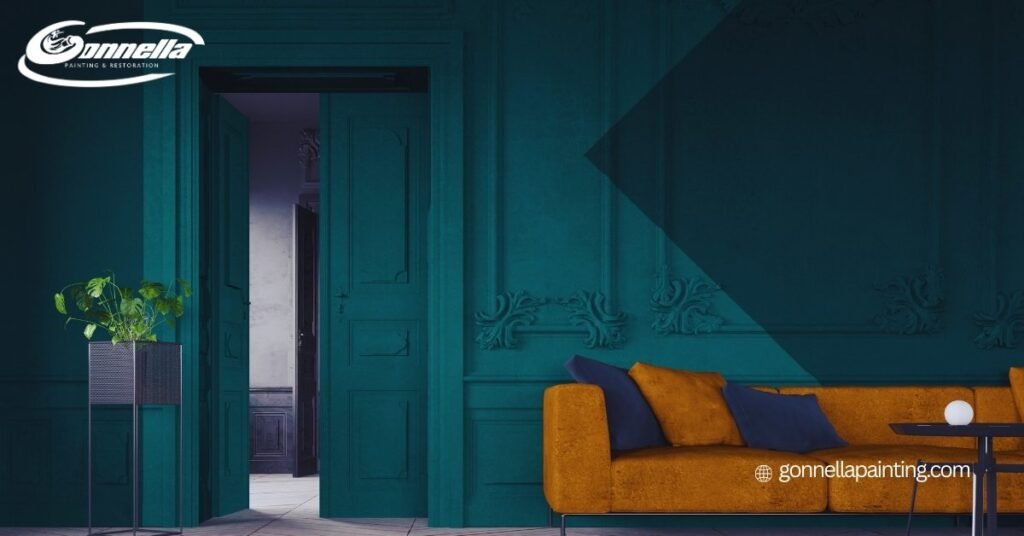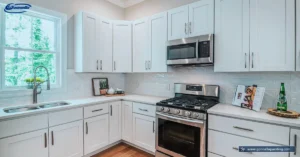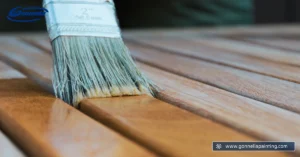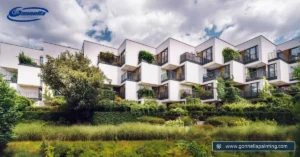Table of Contents
ToggleHow to Choose the Right Paint Colors for Small Rooms
Ever walk into a small room and instantly feel like the walls are closing in on you? Yeah, we’ve all been there. Whether it’s a tiny bedroom, a narrow hallway, or a cramped apartment, small spaces can be tricky to decorate. But guess what? You don’t need to knock down walls or move to a bigger place to make a room feel more spacious. All you really need is some smart paint choices. Yep, the best paint colors and techniques for small spaces can completely change the way a room looks and feels.
In fact, the right paint can make your space look bigger, brighter, and way more inviting. Want to know how? Let’s get into it.
Light Colors in Small Spaces: The Secret to Making a Living Room Look Bigger
You might think, “It’s just paint… how much of a difference can it make?” But here’s the thing, color plays mind tricks. It can make a living room feel cozy or cold, spacious or squished. It’s all about perception.
Light colors reflect light, making your space feel open and airy. Dark colors absorb light, which can make things feel closed off, but also cozy if done right. It’s not just about shade; it’s about how and where you use it. If you’re unsure where to start, check out these tips for finding the perfect living room paint color.
Best Interior Paint Colors to Visually Expand Small Rooms

Alright, let’s talk colors. If you’re trying to open up a tight space, here are your go-to shades: Best paint colors and techniques for small spaces
1. Light and Bright Wins Every Time
Think soft whites, pale grays, pastels, or even light blues. These shades bounce light around and make everything feel more open.
Some solid picks:
- Soft white – Clean and timeless
- Light gray – Chic and modern
- Pale blue – Calm and breezy
- Blush pink – Subtle yet stylish
These colors are like giving your walls a deep breath of fresh air. If your room doesn’t get a ton of natural light, these are a game-changer.
Pro tip: Go for a satin or eggshell finish to reflect even more light.
Need help choosing the right finish? Our residential painting experts can guide you.
2. Bold Colors Can Work Too (Seriously!)
I know what you’re thinking. Bold colors in a small room? Isn’t that a no-no? Actually, if you pair them with good lighting and keep the furniture light, it can look amazing.
Try:
- Navy blue – Moody, rich, and elegant
- Charcoal gray – Sophisticated without feeling stuffy
- Forest green – Cozy with a touch of nature
- Deep burgundy – Warm and inviting
Just balance the room out with lighter elements, like white trim, mirrors, or bright artwork. It’s all about contrast.
3. Earthy Neutrals for That Calm Vibe
Sometimes, you just want a space that feels chill. Not too bright, not too dark, just… calm. That’s where earth tones and warm neutrals come in.
Try shades like:
- Beige
- Greige (gray + beige)
- Sandy taupe
- Warm ivory
These colors are perfect if you’re going for that minimalist, cozy, or natural look. And if you’re considering a refresh, here’s how often you should repaint your home.
4. Add an Accent Wall (Or Two-Tone It!)
Want to add some personality without making the room feel cluttered? Try an accent wall.
Pick one wall, maybe the one behind your bed or the one opposite a window, and go bold. Keep the other three walls light to balance it out.
Or go for a two-tone effect: paint the bottom half darker and the top half lighter. It draws the eye upward and adds interest without shrinking the space.
Painting Techniques That Transform Your Small Room
It’s not just what color you use, it’s also how you use it.
1. Vertical Stripes = Taller Ceilings
Want your ceilings to look higher? Paint vertical stripes. They don’t have to be bold; just a subtle tone-on-tone stripe can make a big difference. Or try an Ombre effect that fades from dark at the bottom to light at the top.
It tricks the eye and adds height. Neat, right?
2. Keep Colors Flowing From Room to Room
If your place has multiple small rooms or an open layout, using a similar color scheme throughout helps create flow. This makes your home feel more connected and bigger.
So instead of painting every room a totally different color, try choosing a cohesive palette. You can still have fun with it, just keep the tones related.
3. Connect Spaces with Cohesive Colors for Small Rooms
Here’s a pro move: paint your walls, trim, and ceiling the same color (or close variations of it). This removes those sharp lines that break up the space, making the room feel seamless.
This works especially well in super small spaces like bathrooms, closets, or laundry rooms. Trust me, it’s a game-changer.
Maximize Natural Light with the Best Paint Finishes
Let’s talk about the right paint finish.
If your space is dark, avoid matte or flat paint, as it absorbs light. Instead, go with a satin, eggshell, or semi-gloss finish. These reflect more light and help brighten things up.
Also, don’t underestimate the power of a well-placed mirror. Put one opposite a window or light source, and boom, instant brightness boost.
For safety tips before you start painting, check out these residential painting safety tips for homeowners.
Common Mistakes to Avoid When Painting Small Spaces
Before you bust out the roller, here are some painting mistakes to avoid:
- Using too many dark colors without balance
- Picking a color based on a tiny paint chip (always test on the wall!)
- Forgetting to factor in natural and artificial lighting
- Choosing too many different colors in a small space
- Going too glossy in a room with a lot of imperfections
Avoid these and you’ll be way ahead of the game. And if you’re unsure whether to hire help, here’s why local residential painters might be your best bet.
FAQs
1. What are the best paint colors to visually expand a small space?
To visually expand a compact space, use light hues like pastel colors, beige, or soft blues. These paint colors for small rooms reflect light and make a space feel larger. Shades of the same color create a cohesive look, perfect for small living and smaller spaces.
2. How can light colors help brighten up compact rooms?
Light colors in small rooms reflect light and enhance both natural and artificial light. Painting the ceiling a lighter shade than the wall color draws the eye upward, making the room feel bigger. This technique is ideal for small spaces like a powder room or a small kitchen.
3. Can bold colors work in small rooms without making them feel cramped?
Yes—using dark colors on one wall as accent colors can add depth without overwhelming a small space. Pair bold hues with lighter furniture and good lighting to make a small room feel balanced. Strategic color choices help transform your small room while maintaining an airy look.
4. What painting techniques help make a small room feel more open?
Use painting techniques like vertical stripes or painting the ceiling the same color as the walls to trick the eye and visually expand the space. Monochrome color combinations and cohesive color throughout living spaces help connect spaces and make small rooms feel bigger and brighter.
5. How do I choose the right interior paint finish for limited natural light?
Choosing the right paint color and finish is key. Satin or eggshell finishes reflect light better than matte, making small spaces feel brighter. Always test paint samples depending on the light. A color consultation can help you discover the best paint colors for small spaces and rooms.
Final Thoughts: Paint Colors and Techniques for Small Spaces
Painting a small space doesn’t have to be a headache, right? With the best paint colors and a few tricks up your sleeve, you can make even the tiniest room feel bigger and brighter. Go for light, bright colors to open up the space, but don’t be afraid to add a bold color here and there for a pop of personality.
Warm neutrals? Perfect for a cozy feel. And why not try accent walls or two-tone designs to break things up? Want to add some height? Vertical lines do the trick. Satin or eggshell finishes reflect light and make a huge difference, too.
Oh, and don’t forget to test your colors before committing! Ready to get started? Contact us today for a color consultation or to schedule your next project.






